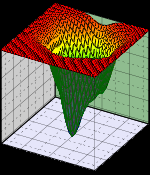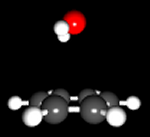![]()
![]()
![]()
 |
Helium Nanodroplet Spectroscopy
Superfluid helium nanodroplets provide an ultra-cold
environment to study novel chemical species. They also afford the opportunity to investigate
the phenomenon of superfluidity, a collective bulk property. Our
helium droplet instrument allows
for measuring microwave and infrared spectra of embedded molecules.
We are looking actively for talented and motivated
graduate students to do research in this area. |
|
High Level ab initio Calculations
In parallel to the spectroscopic investigations of molecular clusters, we are using
high level ab initio calculations to generate intermolecular
interaction potential energy surfaces to gain further insight into the interactions. The lab is equipped
with two computer clusters running MOLPRO 2006.1, Gaussian 03, and Gamess. |
 |
 |
Laser Based Mid-Infrared Trace Gas Sensing
In our Laboratory for Laser Spectroscopy
and Atmospheric Sensing we are developing field-useable and space-qualified mid- and near-infrared atmospheric
trace gas sensors, in a joint effort with
Dr. John Tulip (Department of Electrical and Computer
Engineering, University of Alberta). |
|
Fabrication of MEMS-based External Cavity Laser
Together with two companies, Noracada and Boreal Laser, we are developing MEMS
(micro electro mechanical systems) based
external cavity lasers.
Much of the work is done at the
NanoFab at the UofA. |
|
![]()
